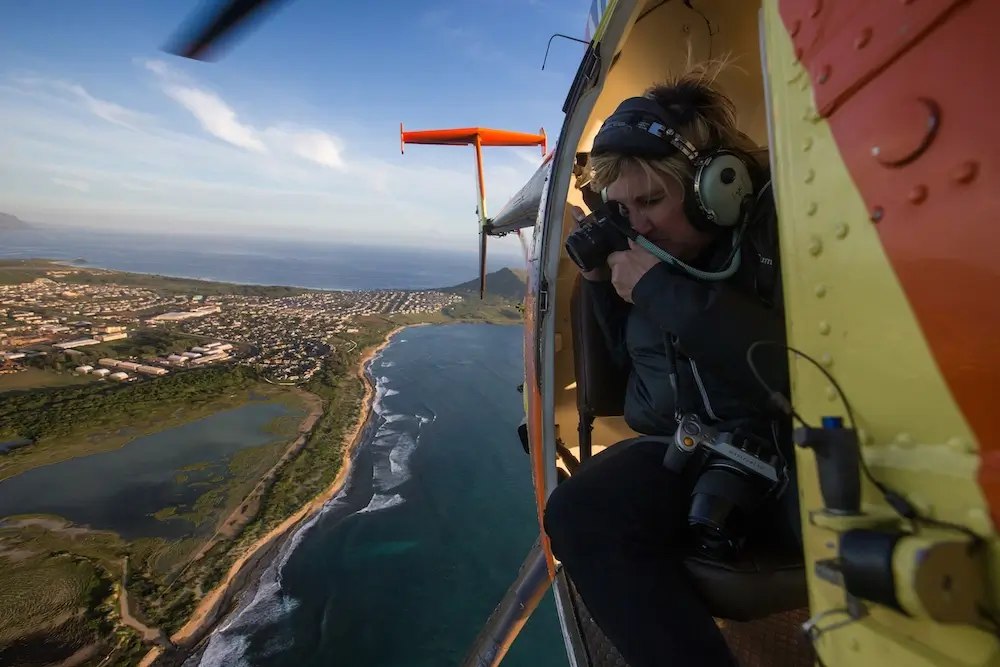Leslie Gleim is a Honolulu-based fine art photographer known for her distinctive visual narratives created through aerial and macro perspectives. Her ongoing work seeks to understand the complex relationships and tensions between the natural, climatic, and human impacts upon the Hawaiian ʻāina (land). With a particular focus on the volcanic ecology of Hawai’i, she captures the regenerative and dynamic process shaped by the volcanic activity and explores the profound changes that are created by those powerful forces on the ʻāina. By documenting this delicate balance between nature and human influence, she hopes to inspire and provoke thoughtful dialogue about environmental stewardship of our planet.
Leslie's work has been widely exhibited and published locally, nationally, and internationally. Her work Life Of The Land was recently purchased into the Art in Public Places Collection of the Hawai’i State Foundation on Culture and the Arts.
Artist Statement
"Life Of The Land”
In 2017, I became curious about the volcanic activity on Hawai’i Island and chartered my first helicopter flight over Kīlauea’s Halemaʻumaʻu crater. Struck by the volcanic power and the resilience of the land, that flight marked the beginning of a photographic narrative documenting the life of the land.
Ancient lava flows, cones, and fissures etch themselves eloquently across the landscapes of Hawaiʻi, their presence akin to pages torn from an ancestral geological journal spanning millennia. Each formation reveals a fragment of Hawai’i's narrative (mo’olelo), bearing witness to its evolution and adaptation, each element telling a tale of resilience and renewal. The photographs are not merely snapshots of geological features; they are windows into the soul of the land, revealing the timeless forces that have shaped the landscape. Each image is freshly written onto the pages of a present-day journal that provides the reader/viewer with both historical and current insights into the story of the land. Simultaneously, it unveils the volcanic cleansing and birthing processes that shapes the ‘aina (land), giving rise to new landscapes from its apocalyptic beginnings.
Are we witnessing glimpses of a future defined or foretold in the Anthropocene era? As we confront the challenges of environmental degradation and climate change, these photographs serve as reminders of the delicate balance between humanity and nature. What stories will endure for future generations, and what legacies will we leave behind?
